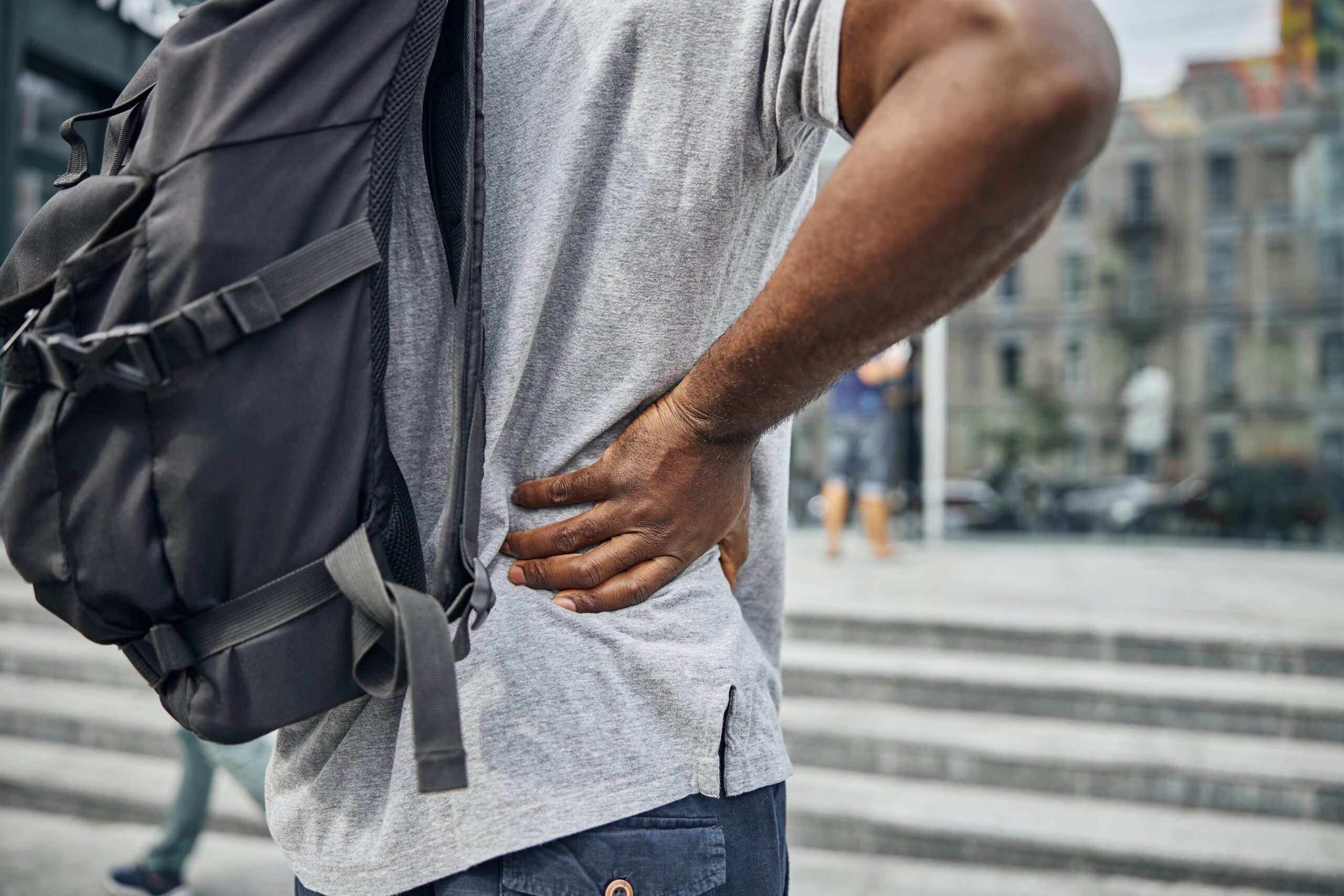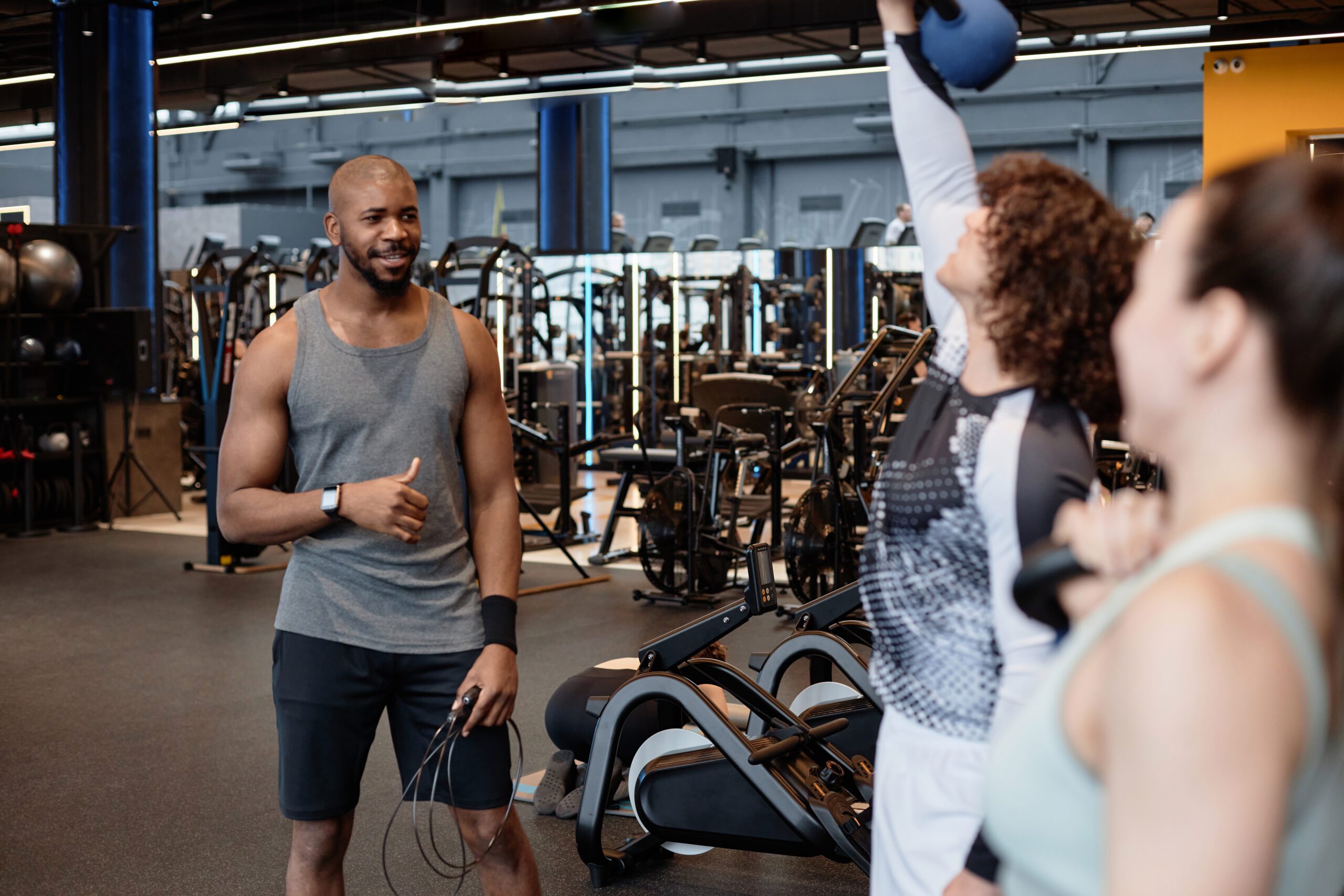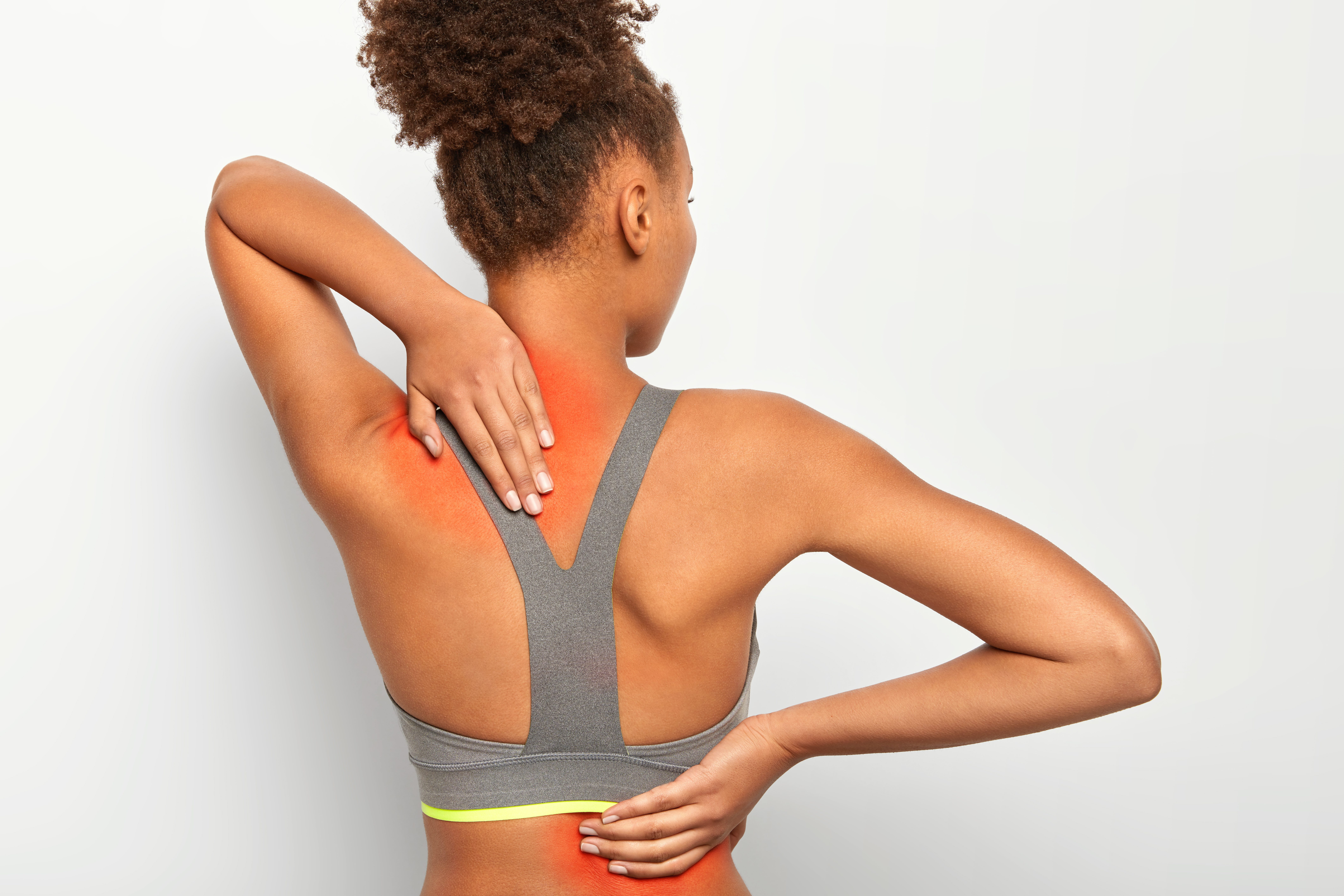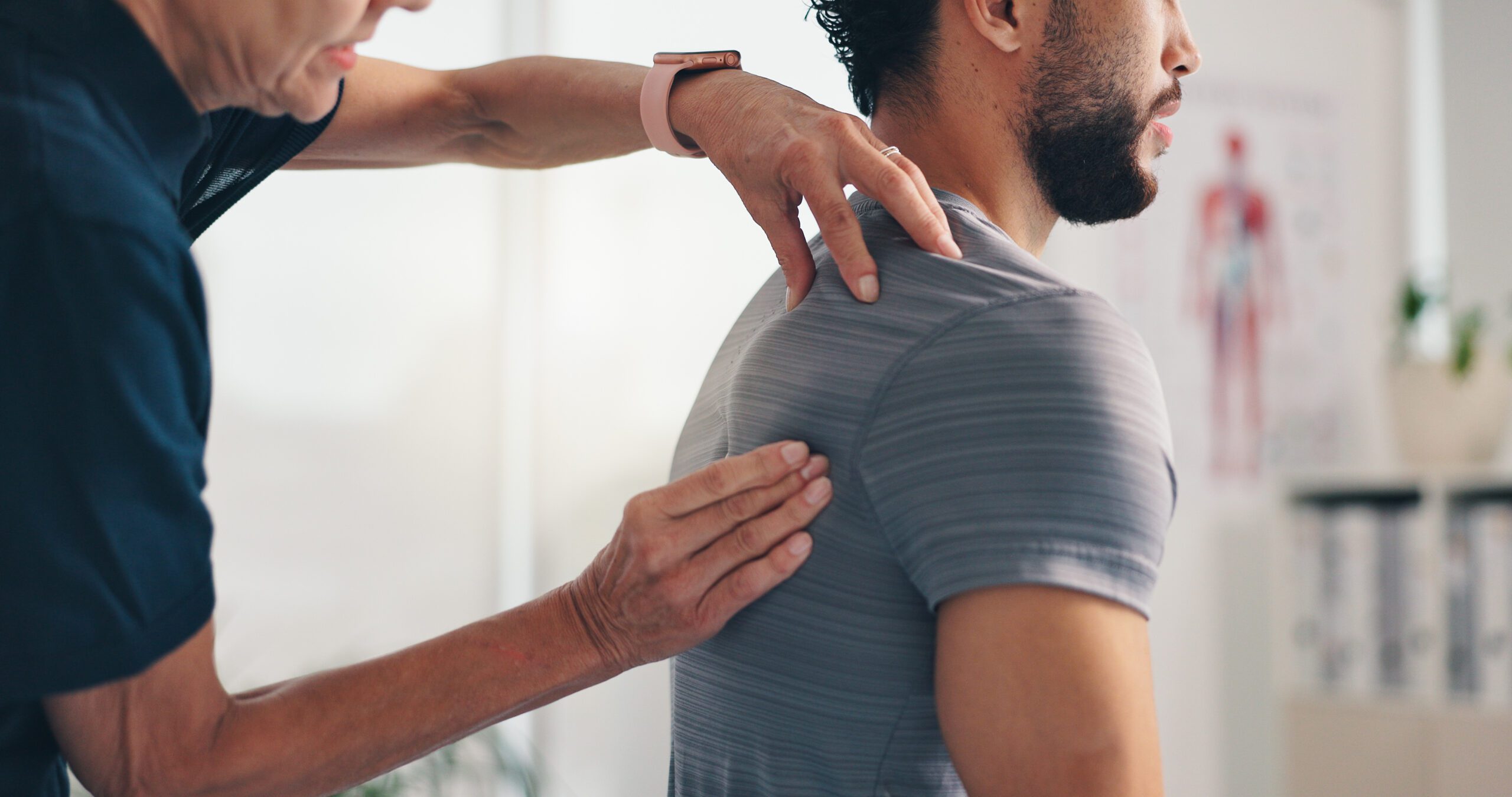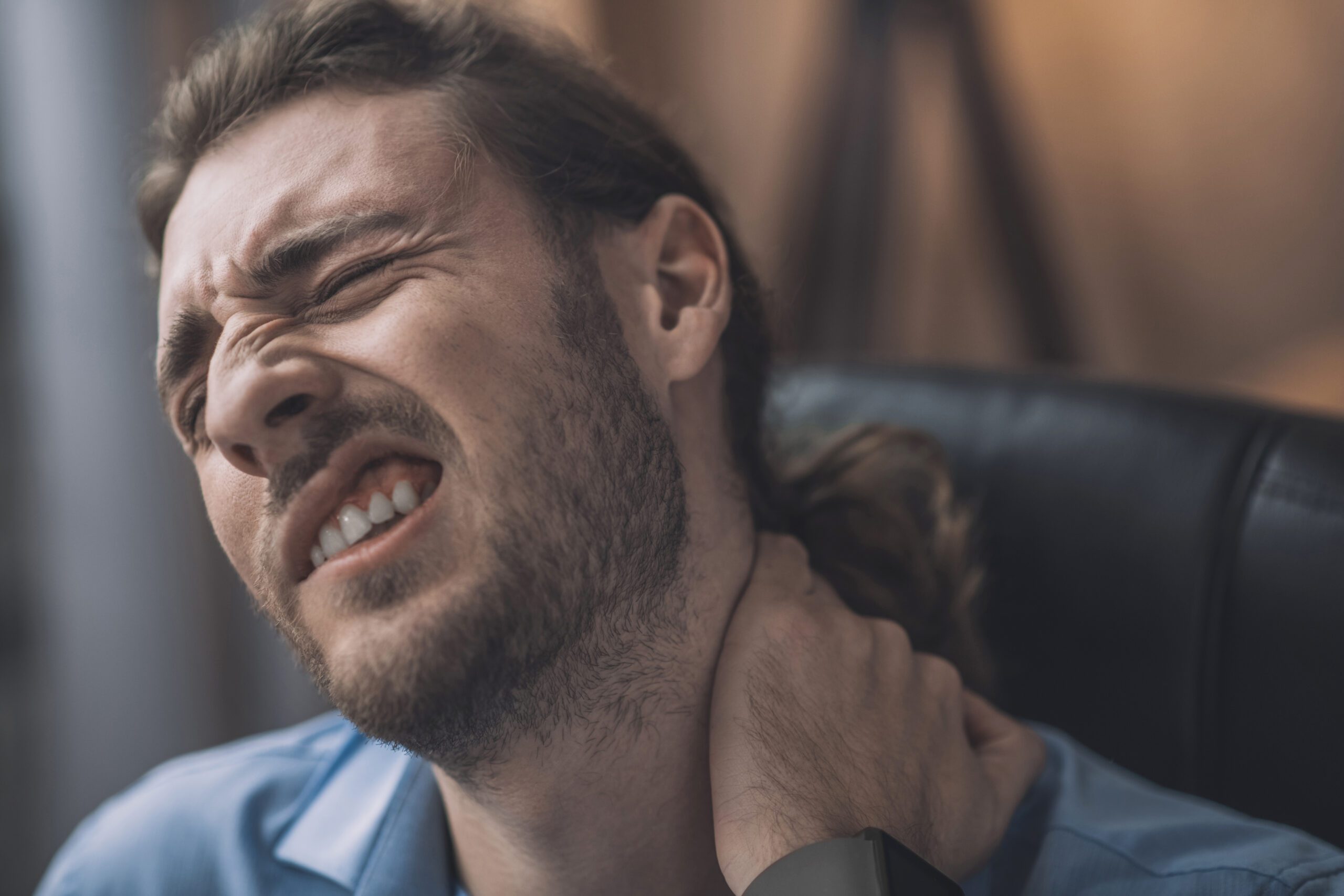Good Posture: Correcting Common Back Pain Issues
Find out how back pain affects daily life and what you can do to achieve good posture, proper alignment, and comfort.
Chiropractic Care and Good Posture: Your Allies Against Low Back Pain
Introduction
Picture this: you’re slouched over your desk, battling a deadline, when suddenly your lower back starts yelling, “Enough already!” Low back pain is like that annoying neighbor who keeps borrowing your tools and never returns them—it’s persistent and frustrating. But don’t worry, there’s hope! Chiropractic care and good posture are like the superheroes of back health, swooping in to save the day. In this comprehensive guide, we’ll explore how chiropractic care can help reduce low back pain, why posture matters, and how Dr. Alexander Jimenez, a renowned chiropractor in El Paso, TX, is making a difference for patients, including those with personal injury cases. So, sit up straight (or at least try), and let’s dive in!
Understanding Low Back Pain
Low back pain is a global health issue, affecting up to 80% of adults at some point in their lives (National Institute of Arthritis and Musculoskeletal and Skin Diseases, 2021). It’s the leading cause of disability worldwide, costing economies over $100 billion annually (Dagenais et al., 2008). Whether it’s a dull ache or a sharp stab, low back pain can make everyday tasks like bending, lifting, or even sitting feel like climbing Mount Everest.
Causes of Low Back Pain
The lumbar spine, the lower part of your back, is a complex structure of bones, muscles, ligaments, and nerves that supports your body and allows movement. When something goes wrong, it can lead to pain. Common causes include:
- Muscle or Ligament Strain: Overexertion, like lifting a heavy box or twisting awkwardly, can strain muscles or sprain ligaments.
- Disc Issues: Bulging or herniated discs can press on nerves, causing pain or numbness.
- Arthritis: Osteoarthritis or other forms can narrow the spinal canal (spinal stenosis), leading to discomfort.
- Skeletal Irregularities: Conditions like scoliosis (sideways spine curvature) or lordosis (excessive inward curvature) can contribute to pain.
- Osteoporosis: Weak, brittle bones increase the risk of compression fractures in the spine.
Low back pain can be acute (lasting less than 6 weeks), subacute (6-12 weeks), or chronic (over 12 weeks). Chronic pain affects about 23% of those with low back pain, significantly impacting daily life (Hartvigsen et al., 2018).
Impact on Daily Life
Low back pain doesn’t just hurt—it can disrupt your routine. Imagine trying to tie your shoes, carry groceries, or play with your kids when every move feels like a chore. It can lead to missed workdays, reduced physical activity, and even emotional stress. For active individuals, like athletes or those with demanding jobs, chronic low back pain can be particularly debilitating, limiting performance and quality of life (George & Goode, 2018).
| Cause | Description | Impact on Daily Life |
|---|---|---|
| Muscle/Ligament Strain | Overuse or improper movement strains muscles or ligaments. | Difficulty bending, lifting, or sitting comfortably. |
| Herniated Disc | Disc bulges or ruptures, pressing on nerves. | Pain, numbness, or weakness in legs; limited mobility. |
| Arthritis | Inflammation or degeneration narrows spinal canal. | Stiffness, chronic pain, reduced range of motion. |
| Scoliosis/Lordosis | Abnormal spine curvature increases stress on back. | Pain during prolonged standing or sitting. |
| Osteoporosis | Brittle bones lead to fractures. | Sudden pain, limited movement, risk of further injury. |
References
- Dagenais, S., Caro, J., & Haldeman, S. (2008). A systematic review of low back pain cost of illness studies in the United States and internationally. Spine Journal, 8(1), 8-20. https://doi.org/10.1016/j.spinee.2007.10.005
- Hartvigsen, J., Hancock, M. J., Kongsted, A., Louw, Q., Ferreira, M. L., Genevay, S., Hoy, D., Karppinen, J., Pransky, G., Sieper, J., Smeets, R. J., & Underwood, M. (2018). What low back pain is and why we need to pay attention. The Lancet, 391(10137), 2356-2367. https://doi.org/10.1016/S0140-6736(18)30480-X
- National Institute of Arthritis and Musculoskeletal and Skin Diseases. (2021). Low Back Pain Fact Sheet. https://www.niams.nih.gov/health-topics/low-back-pain
- George, S. Z., & Goode, A. P. (2018). Management of chronic low back pain in active individuals. Current Sports Medicine Reports, 17(12), 412-418. https://pubmed.ncbi.nlm.nih.gov/30531458/
The Role of Posture in Low Back Pain
Posture is how you hold your body while standing, sitting, or moving. Good posture aligns your ears, shoulders, hips, knees, and ankles, reducing strain on your spine. Poor posture, like slouching or hunching, is like asking your back to carry a backpack full of bricks—it’s going to complain eventually.
How Poor Posture Contributes to Pain
Poor posture increases mechanical stress on the lumbar spine, leading to muscle imbalances, joint strain, and pain. For example, forward head posture (common from staring at screens) shifts your center of gravity, forcing your lower back to compensate. Research suggests that prolonged poor posture is a potential risk factor for lumbar spine injuries (Czarnota et al., 2020). Specific postural issues include:
- Lordosis: Excessive inward curve of the lower back, often linked to disc herniation.
- Sway-Back: Forward head and flattened lumbar curve, increasing stress on the spine.
- Kyphosis: Excessive upper back curvature, which can strain the lower back.
- Flat Back: Reduced lumbar curve, leading to instability and pain.
- Scoliosis: Sideways spine curvature, affecting 2-3% of the population, often causing pain (Czarnota et al., 2020).
Benefits of Good Posture
Good posture reduces stress on your spine, improves muscle balance, and enhances overall body function. It’s like giving your back a well-deserved spa day. Studies indicate that maintaining proper posture can help prevent low back pain and improve symptoms in those already affected (El Paso Back Clinic, n.d.). Simple habits, like standing tall or sitting with back support, can make a big difference.
| Postural Issue | Description | Impact on Low Back Pain |
|---|---|---|
| Lordosis | Excessive lumbar curve | Increases risk of disc herniation |
| Sway-Back | Flattened lumbar region | Compensatory stress on lower back |
| Kyphosis | Excessive upper back curve | Strains lumbar spine |
| Flat Back | Reduced lumbar curve | Causes instability and pain |
| Scoliosis | Sideways spine curvature | Leads to uneven load and pain |
References
- Czarnota, J., Gawda, P., & Madej-Pilarczyk, A. (2020). Postural defects in children and adolescents: A review of literature. Journal of Clinical Medicine, 9(10), 3229. https://pubmed.ncbi.nlm.nih.gov/37655847/
- El Paso Back Clinic. (n.d.). Practicing good posture can relieve back pain. https://elpasobackclinic.com/practicing-good-posture-can-relieve-back-pain/
Chiropractic Care for Low Back Pain
Chiropractic care is like a tune-up for your spine. It’s a non-invasive, drug-free approach that focuses on aligning the musculoskeletal system, particularly the spine, to improve function and reduce pain. Chiropractors use techniques like spinal manipulation, where they apply controlled force to joints to restore mobility.
How It Works
Spinal manipulation aims to correct misalignments (subluxations) that can irritate nerves and cause pain. By restoring joint motion, chiropractic care may reduce pain and improve function. For acute low back pain, spinal manipulation combined with usual care has shown small but significant short-term benefits (Rubinstein et al., 2012). For chronic pain, it may provide relief when paired with other treatments, though results are less conclusive (Park et al., 2023).
Other Chiropractic Techniques
Beyond adjustments, chiropractors may use:
- Soft Tissue Therapy: Massage or stretching to relax muscles.
- Exercise Therapy: Tailored exercises to strengthen the core and improve flexibility.
- Lifestyle Advice: Tips on posture, ergonomics, and nutrition.
Research supports chiropractic care’s effectiveness, with studies showing improvements in pain and disability for low back pain patients (Bronfort et al., 2010). However, it’s not a one-size-fits-all solution, and outcomes vary based on individual factors.
References
- Bronfort, G., Haas, M., Evans, R., Leininger, B., & Triano, J. (2010). Effectiveness of manual therapies: The UK evidence report. Chiropractic & Osteopathic Medicine, 18(1), 3. https://doi.org/10.1186/1746-1340-18-3
- Rubinstein, S. M., Terwee, C. B., Assendelft, W. J., de Boer, M. R., & van Tulder, M. W. (2012). Spinal manipulative therapy for acute low back pain: An update of the Cochrane Review. Spine, 37(3), 254-262. https://doi.org/10.1097/BRS.0b013e318223ae4c
- Park, S. C., Kang, M.-S., Yang, J. H., & Kim, T.-H. (2023). Assessment and nonsurgical management of low back pain: A narrative review. The Korean Journal of Internal Medicine, 38(1), 16-26. https://doi.org/10.3904/kjim.2022.250
Postural Assessment: The Key to Identifying Issues
Postural assessment is like a detective game for your spine. It involves evaluating your body’s alignment to spot imbalances that might contribute to pain. Chiropractors use various methods to assess posture, ensuring they target the root cause of your discomfort.
Methods of Postural Assessment
- Visual Observation: Checking posture from front, side, and back views for deviations like uneven shoulders or hips.
- Plumb Line: A weighted line ensures alignment from head to ankles.
- Photography: Captures posture for detailed analysis.
- Photogrammetry: Uses software to measure angles and distances, considered highly reliable (Singla & Veqar, 2014).
- Flexiruler: Measures spinal curvature.
- Electromagnetic Tracking: Tracks posture in real-time with sensors.
Postural assessment helps identify issues like forward head posture or pelvic tilt, which can contribute to low back pain. It’s a critical step in creating a personalized treatment plan (Czarnota et al., 2020).
References
- Singla, D., & Veqar, Z. (2014). Methods of postural assessment used for sports persons. Journal of Clinical and Diagnostic Research, 8(4), LE01-LE04. https://doi.org/10.7860/JCDR/2014/7746.4225
- Czarnota, J., Gawda, P., & Madej-Pilarczyk, A. (2020). Postural defects in children and adolescents: A review of literature. Journal of Clinical Medicine, 9(10), 3229. https://pubmed.ncbi.nlm.nih.gov/37655847/
Can Core Exercises Help With Back Pain- Video
Clinical Insights from Dr. Alexander Jimenez
Dr. Alexander Jimenez, DC, APRN, FNP-BC, is a chiropractic and nurse practitioner powerhouse in El Paso, TX. With over 25 years of experience, he runs Injury Medical & Chiropractic Clinic, where he tackles low back pain with a multidisciplinary approach (https://dralexjimenez.com/). “Good posture is the foundation of health,” Dr. Jimenez says. “When your posture is off, it’s like driving a car with misaligned wheels—it’s going to cause problems.”
Dr. Jimenez’s Approach
Dr. Jimenez combines:
- Chiropractic Adjustments: To correct spinal misalignments.
- Functional Medicine: Addressing systemic issues like inflammation or nutrition.
- Rehabilitation Exercises: Strengthening core muscles and improving posture.
- PUSH-as-Rx System: A functional fitness program to enhance mobility and strength.
His dual licensure allows him to use advanced diagnostics, like imaging and blood panels, to pinpoint the causes of pain. Patients praise his thoroughness, with many reporting significant pain relief (https://www.yelp.com/biz/alex-jimenez-dc-injury-medical-and-chiropractic-clinic-el-paso-8).
References
- Jimenez, A. (n.d.). El Paso, TX Chiropractor Dr. Alex Jimenez DC | Personal Injury Specialist. https://dralexjimenez.com/
- Jimenez, A. (n.d.). LinkedIn Profile. https://www.linkedin.com/in/dralexjimenez/
Personal Injury Cases and Chiropractic Care
Accidents like car crashes or slips can leave you with low back pain that lingers like an unwanted guest. Chiropractic care is a go-to option for personal injury victims, offering pain relief and improved mobility without drugs or surgery. Dr. Jimenez excels in this area, using advanced imaging and diagnostics to document injuries for legal purposes while providing top-notch care (https://elpasobackclinic.com/).
Benefits in Personal Injury
- Pain Management: Reduces discomfort through adjustments and therapy.
- Mobility Restoration: Helps regain range of motion.
- Legal Documentation: Dr. Jimenez collaborates with attorneys to provide detailed injury reports.
Early intervention is key, as it can prevent chronic pain and speed recovery. Dr. Jimenez’s expertise makes him a trusted choice for El Paso’s personal injury patients.
References
- El Paso Back Clinic. (n.d.). Back Pain Specialist | El Paso, TX. https://elpasobackclinic.com/back-pain-specialist-el-paso-tx/
Tips for Maintaining Good Posture
Good posture isn’t just for impressing your grandma—it’s a game-changer for your back. Here are some practical tips to keep your spine happy:
- Stand Tall: Imagine a string pulling you up from your head. Keep shoulders back, chest open, and weight evenly distributed.
- Sit Smart: Feet flat, knees at hip level, back supported with a small pillow if needed.
- Move Often: Take breaks every 30 minutes to stretch or walk.
- Ergonomic Workspace: Screen at eye level, keyboard allowing 90-degree elbow bend.
- Core Strength: Try planks or bridges to support your spine.
- Stretch Daily: Focus on chest, hips, and hamstrings to release tension.
- Stay Mindful: Catch yourself slouching? Fix it!
These habits can reduce strain and prevent pain (El Paso Back Clinic, n.d.).
References
- El Paso Back Clinic. (n.d.). Practicing good posture can relieve back pain. https://elpasobackclinic.com/practicing-good-posture-can-relieve-back-pain/
Case Study: John’s Journey to Pain-Free Living
Meet John, a 45-year-old office worker who battled chronic low back pain from years of slouching at his desk. Frustrated with temporary fixes, he visited Dr. Jimenez. A postural assessment revealed forward head posture and a flattened lumbar curve. Dr. Jimenez crafted a plan with adjustments, core exercises, and ergonomic advice. Within weeks, John’s pain decreased, and he felt more energetic. Today, he’s pain-free and stands taller, thanks to Dr. Jimenez’s care (https://elpasobackclinic.com/back-pain-specialist-el-paso-tx/).
Conclusion
Chiropractic care and good posture are powerful tools for tackling low back pain. By aligning your spine and standing tall, you can reduce pain, improve function, and boost your quality of life. Experts like Dr. Alexander Jimenez offer personalized care that makes a real difference, especially for personal injury cases. Don’t let low back pain hold you back—seek professional help and start standing straighter today.
Serious Note
Low back pain is no laughing matter. It can disrupt your life, from work to play to family time. While we’ve added some humor to keep things light, please take persistent or severe pain seriously. Consult a healthcare provider, like a chiropractor or doctor, to find the best treatment for you. Your health is worth it.
References
- Bronfort, G., Haas, M., Evans, R., Leininger, B., & Triano, J. (2010). Effectiveness of manual therapies: The UK evidence report. Chiropractic & Osteopathic Medicine, 18(1), 3. https://doi.org/10.1186/1746-1340-18-3
- Czarnota, J., Gawda, P., & Madej-Pilarczyk, A. (2020). Postural defects in children and adolescents: A review of literature. Journal of Clinical Medicine, 9(10), 3229. https://pubmed.ncbi.nlm.nih.gov/37655847/
- Dagenais, S., Caro, J., & Haldeman, S. (2008). A systematic review of low back pain cost of illness studies in the United States and internationally. Spine Journal, 8(1), 8-20. https://doi.org/10.1016/j.spinee.2007.10.005
- Hartvigsen, J., Hancock, M. J., Kongsted, A., Louw, Q., Ferreira, M. L., Genevay, S., Hoy, D., Karppinen, J., Pransky, G., Sieper, J., Smeets, R. J., & Underwood, M. (2018). What low back pain is and why we need to pay attention. The Lancet, 391(10137), 2356-2367. https://doi.org/10.1016/S0140-6736(18)30480-X
- National Institute of Arthritis and Musculoskeletal and Skin Diseases. (2021). Low Back Pain Fact Sheet. https://www.niams.nih.gov/health-topics/low-back-pain
- Park, S. C., Kang, M.-S., Yang, J. H., & Kim, T.-H. (2023). Assessment and nonsurgical management of low back pain: A narrative review. The Korean Journal of Internal Medicine, 38(1), 16-26. https://doi.org/10.3904/kjim.2022.250
- Rubinstein, S. M., Terwee, C. B., Assendelft, W. J., de Boer, M. R., & van Tulder, M. W. (2012). Spinal manipulative therapy for acute low back pain: An update of the Cochrane Review. Spine, 37(3), 254-262. https://doi.org/10.1097/BRS.0b013e318223ae4c
- Singla, D., & Veqar, Z. (2014). Methods of postural assessment used for sports persons. Journal of Clinical and Diagnostic Research, 8(4), LE01-LE04. https://doi.org/10.7860/JCDR/2014/7746.4225
- Swain, C. T., Pan, F., Owen, P. J., Schmidt, H., & Belavy, D. L. (2020). No consensus on causality of spine postures or physical exposure and low back pain: A systematic review of systematic reviews. Journal of Biomechanics, 102, 109312. https://pubmed.ncbi.nlm.nih.gov/31451200/


